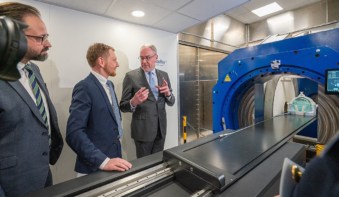Everyone knows that the World Wide Web was invented at CERN in Switzerland, but the technology really began to take off when it reached the Stanford Linear Accelerator Center (SLAC) in California’s Silicon Valley. In this episode of the Physics World Weekly podcast, the physicist and writer Michael Riordan explains how today’s Web was forged by physicists and entrepreneurs with a common vision of a connected future.
He also explains why having access to the early Web allowed CERN scientists to design and build the Large Hadron quickly and efficiently. In contrast, just a few years earlier the US-based Superconducting Supercollider was cancelled in part because difficulties in managing the huge project had led to cost overruns.
Also in this podcast, we chat about a compact and low-cost magnetic resonance imaging system that could improve global access to neuroimaging. We also look at how quantum computers could shed light on how quarks interact and explain why complex numbers are best when it comes to quantum theory.



